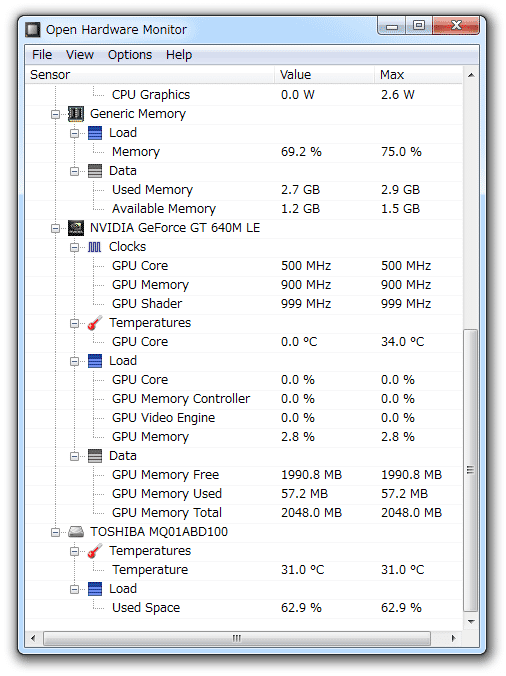
I choose to just show the speed of 1 core and the temperature of the cpu package instead of more stuff. Then put the gadget somewhere out of the way. Then, still in view right click on the items you want showing and choose to show in Gadget. To set this up:Tell Open Hardware Monitor to show the gadget.īy pulling down the view menu and checking it. I like to check and see if my system is running normally. When I saw that I looked and found a backup program hard at work doing nothing at all for a few days! I closed it then restarted it and my system returned to normal. I had a situation where a program went nuts and the cpu temperature rose to about 95 degrees and the CPU speed stayed over 3,000 MHz. This is what it looks like if I'm typing my newsletter and not doing much else. The next two sections show the temperature and space used on my two SSDs and the bottom one shows my external USB drive which doesn't appear to have an available temperature sensor. When it works harder the temperature goes up and so does the CPU speed.

The bar below that shows that the CPU is doing almost nothing working at about 2% capacity. You will also notice that it is very cool at just over 80 degrees.
#Open hardware monitor rus full
This cpu will go about 3500 so it is running at under one third of full speed. You'll notice the 1197 MHz as the first line above. I'm not monitoring too much, but I am checking how fast a core runs. In the bottom right corner of my right monitor (in an out of the way place) I have their gadget running all the time. By checking them periodically, you can get to know how your computer normally works and spot problems early. It has an option to create a gadget and to load that gadget with measurements. Getting the most from Open Hardware Monitorīesides merely checking the temperature monthly, you can get to know your computer better with Open Hardware Monitor.

Security Internet Mobile Business Hardware Fun


 0 kommentar(er)
0 kommentar(er)
